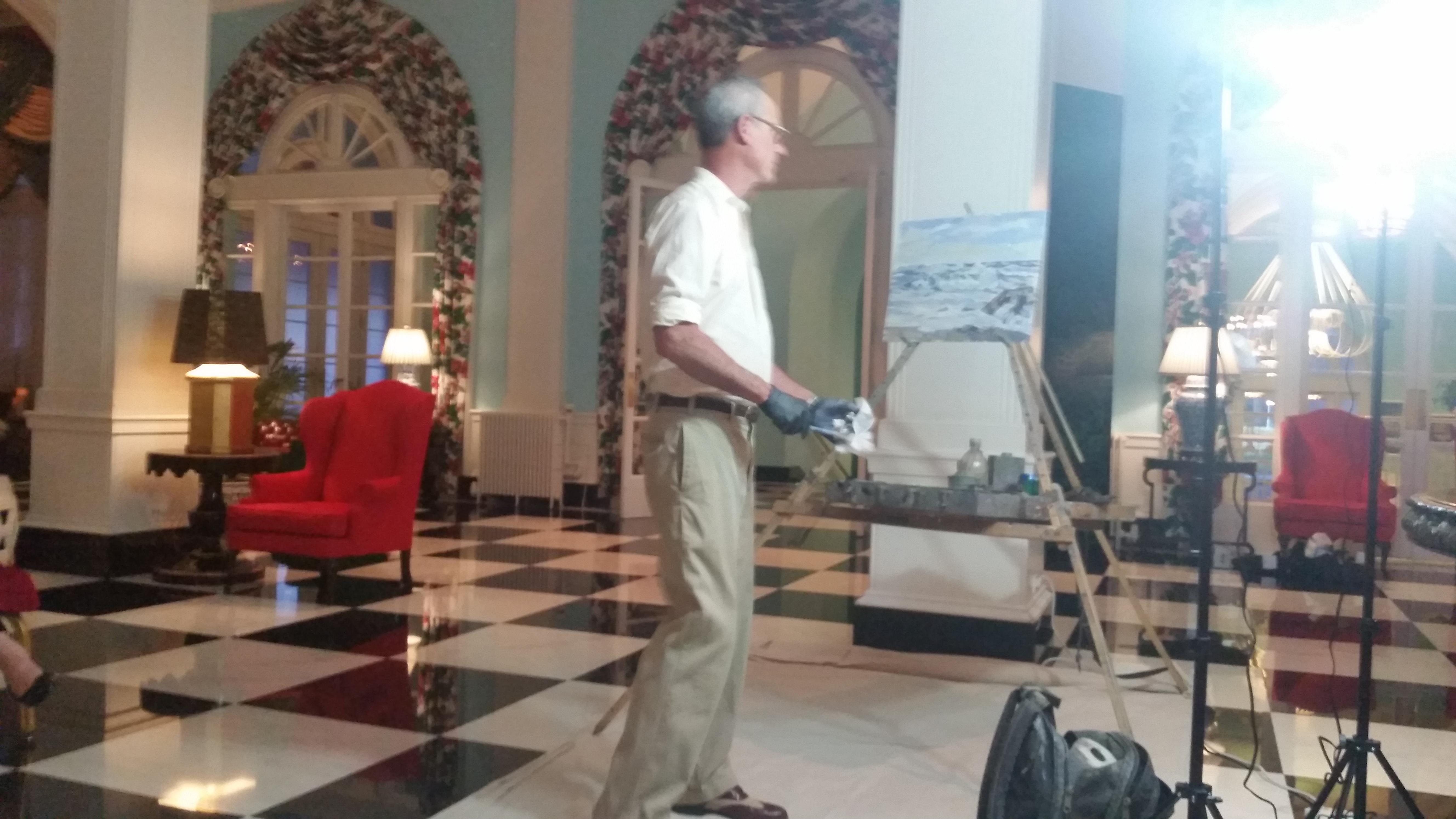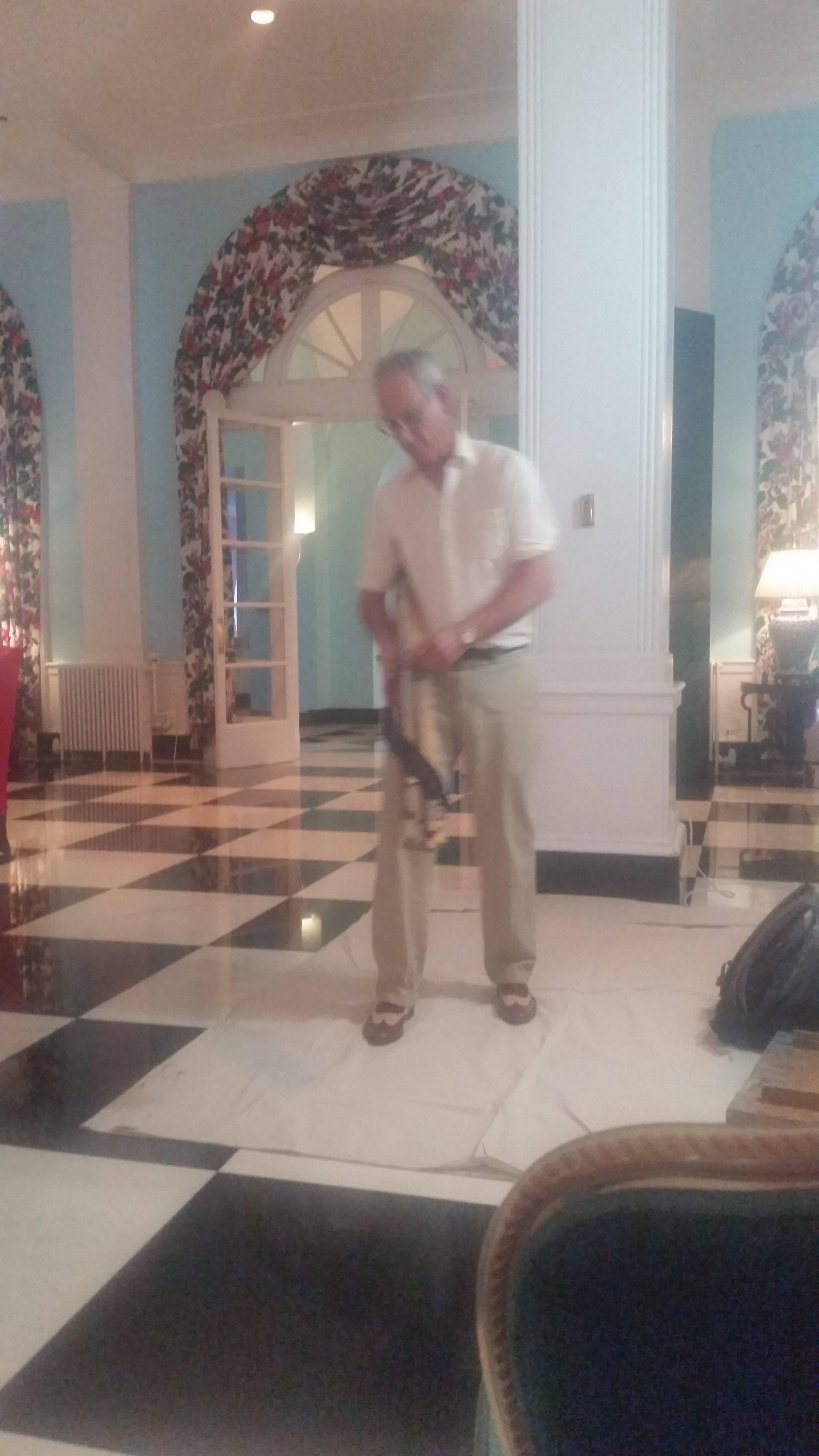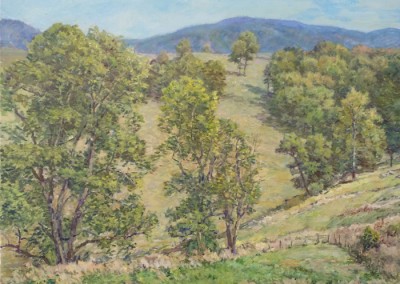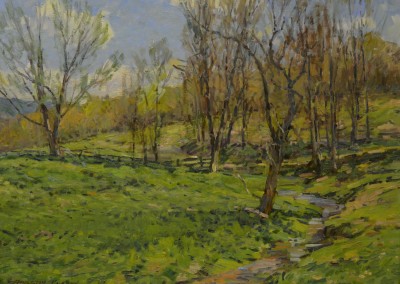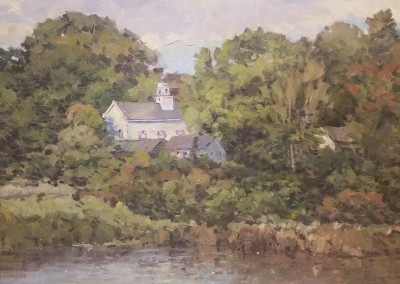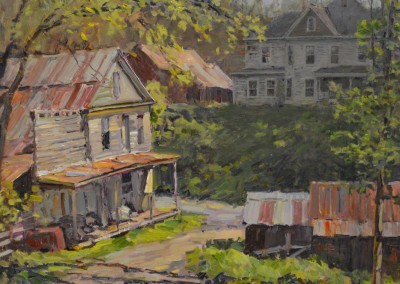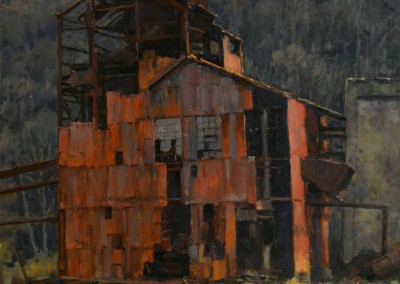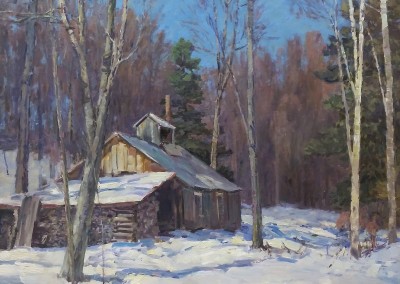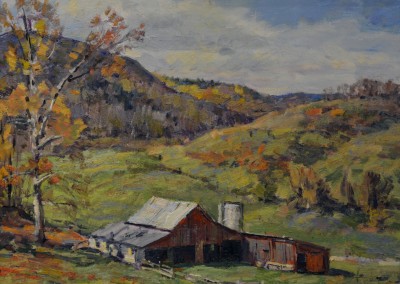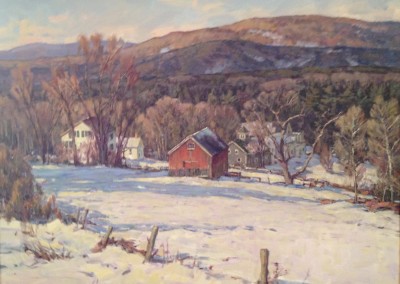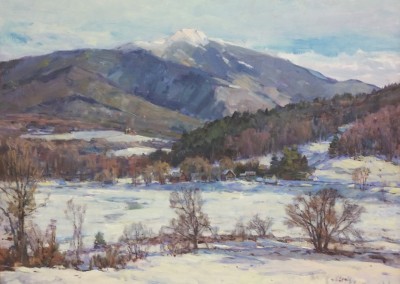Stapleton Kearns
For Artist Info & Prices
 Stapleton was born in Rochester, Minnesota in 1952. He is the son of an ophthalmologist who practiced from residency to retirement with the Mayo Clinic. His mother has always been and still is very interested in art history. Even as a small child, Stapleton was exposed to art. He remembers scouring his mother’s Antiques magazines looking at the paintings of “those dead guys” whose work he admired. In fact, Stapleton has always wanted to paint “like those dead guys.” From childhood to present, he has single-mindedly pursued this goal. As a child in school Stapleton drew behind his books. For several years he attended Shattuck, a boarding Military Academy, where he obtained an exceptional liberal arts education. To this day he is an avid reader and accumulator of “useless” information. In public high school he pretty much lived in the art room. He laughs at being dubbed “non-college material.” It was while he was in high school that he sold his first pieces or artwork at outdoor art fairs. Stapleton dropped out of high school, obtained his G.E.D., and went on to the Minneapolis College of Art and Design where he became a neon sculptor. Tiring of this more modern approach, he left art school and transferred to the University of Minnesota in Minneapolis. Click for press coverage of Stapleton Kearns
Stapleton was born in Rochester, Minnesota in 1952. He is the son of an ophthalmologist who practiced from residency to retirement with the Mayo Clinic. His mother has always been and still is very interested in art history. Even as a small child, Stapleton was exposed to art. He remembers scouring his mother’s Antiques magazines looking at the paintings of “those dead guys” whose work he admired. In fact, Stapleton has always wanted to paint “like those dead guys.” From childhood to present, he has single-mindedly pursued this goal. As a child in school Stapleton drew behind his books. For several years he attended Shattuck, a boarding Military Academy, where he obtained an exceptional liberal arts education. To this day he is an avid reader and accumulator of “useless” information. In public high school he pretty much lived in the art room. He laughs at being dubbed “non-college material.” It was while he was in high school that he sold his first pieces or artwork at outdoor art fairs. Stapleton dropped out of high school, obtained his G.E.D., and went on to the Minneapolis College of Art and Design where he became a neon sculptor. Tiring of this more modern approach, he left art school and transferred to the University of Minnesota in Minneapolis. Click for press coverage of Stapleton Kearns
 Stapleton was born in Rochester, Minnesota in 1952. He is the son of an ophthalmologist who practiced from residency to retirement with the Mayo Clinic. His mother has always been and still is very interested in art history. Even as a small child, Stapleton was exposed to art. He remembers scouring his mother’s Antiques magazines looking at the paintings of “those dead guys” whose work he admired. In fact, Stapleton has always wanted to paint “like those dead guys.” From childhood to present, he has single-mindedly pursued this goal. As a child in school Stapleton drew behind his books. For several years he attended Shattuck, a boarding Military Academy, where he obtained an exceptional liberal arts education. To this day he is an avid reader and accumulator of “useless” information. In public high school he pretty much lived in the art room. He laughs at being dubbed “non-college material.” It was while he was in high school that he sold his first pieces or artwork at outdoor art fairs. Stapleton dropped out of high school, obtained his G.E.D., and went on to the Minneapolis College of Art and Design where he became a neon sculptor. Tiring of this more modern approach, he left art school and transferred to the University of Minnesota in Minneapolis. Click for press coverage of Stapleton Kearns
Stapleton was born in Rochester, Minnesota in 1952. He is the son of an ophthalmologist who practiced from residency to retirement with the Mayo Clinic. His mother has always been and still is very interested in art history. Even as a small child, Stapleton was exposed to art. He remembers scouring his mother’s Antiques magazines looking at the paintings of “those dead guys” whose work he admired. In fact, Stapleton has always wanted to paint “like those dead guys.” From childhood to present, he has single-mindedly pursued this goal. As a child in school Stapleton drew behind his books. For several years he attended Shattuck, a boarding Military Academy, where he obtained an exceptional liberal arts education. To this day he is an avid reader and accumulator of “useless” information. In public high school he pretty much lived in the art room. He laughs at being dubbed “non-college material.” It was while he was in high school that he sold his first pieces or artwork at outdoor art fairs. Stapleton dropped out of high school, obtained his G.E.D., and went on to the Minneapolis College of Art and Design where he became a neon sculptor. Tiring of this more modern approach, he left art school and transferred to the University of Minnesota in Minneapolis. Click for press coverage of Stapleton Kearns“It only matters what the painting actually looks like, not how long it took, or how hard I had to work to make it.” -Stapleton
Read more...
Stapleton worked in the etching department of the university where representational work saw some respect. It was there in the early 1970’s he met an artist, Charles Cecil, who was pulling a print of what Stapleton refers to as “a beautiful little figure.” When questioned about it, Mr. Cecil told Stapleton that he had been trained in the old-fashioned method, by apprenticeship, to a formidable master R.H. Ives Gammell. Ives Gammell was old enough to have known and studied with the impressionist painters now found in the collections of our major American museums. Mr. Gammell, Mr. Cecil explained, kept a studio on the Fenway in Boston, Massachusetts. Stapleton wrote to Mr. Gammell and was invited for an interview with the then eighty-three year old man. Soon thereafter, Stapleton went to work with Mr. Gammell drawing casts, or plaster busts, and the figure. He was assigned to Mr. Gammell’s senior student, Robert Douglass Hunter, for the summer. It was with Hunter that Stapleton was introduced to outdoor impressionism. He took a great liking to it. Mr. Hunter also gave seminars in how to be a successful artist from a practical perspective. Stapleton often credits these lessons with his ability to survive as an artist. After several years of this rigorous training Stapleton returned to Minneapolis. These were hard and lean years for him. He was painting long hours and making very little money – barely surviving. He had no car, no telephone, and no bank account. For awhile he lived in the grain elevator of a friend’s barn in nearby Osceola, Wisconsin. Evidently she wished to clean it a bit for sanitary reasons before he took up occupancy. Stapleton told her not to bother. She says that soon it did not matter – the paint, dirt and droppings all melded together. As the cold weather approached another friend offered him a car he was about to junk. Stapleton gladly accepted. He had decided that the Minneapolis buying public’s fondness for wildlife art was not what he wanted to paint. He says he had to leave Minnesota and its fondness for wildlife art before he “quacked under the pressure.” So, he drove the car, adding oil every one hundred miles, until he reached his sister’s home in Boston. Back in Boston, Stapleton once again sought the advice of Robert Douglass Hunter. Hunter suggested Stapleton go to Rockport, New England’s historic art colony, where there are many outdoor impressionist painters who keep their own seasonal galleries. A lucky and perhaps divine lottery ticket provided the gas for the trip from Boston to Rockport. Stapleton arrived in Rockport, almost penniless, in December with the “season” not occurring until the next summer. Stapleton is a tall fellow. He is good as he says, at dusting transoms and screwing in light bulbs. He had never formally worked a job but for a while he was studying with Gammell he had been the janitor at the Guild of Boston Artists. Stapleton became the part-time janitor of the Rockport Art Association for that winter. Come summer the long haired bachelor hung his art in a shop on Bearskin Neck with a gypsy and a glass blower. Rockport is a very conservative place. Stapleton refers to himself as the point at which rock and roll and traditional oil painting meet. Still, he remembers a fellow artist coming into his shop and saying, “keep painting because they are going to come and buy all these and more – more than you can paint.” “They” did.
Sold Works
Stapleton Kearns writes an edifying and entertaining blog HERE. During his visits to The Greenbrier, he has presented art history talks and, most recently, a painting demonstration.
